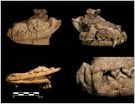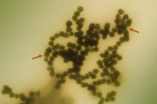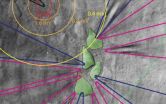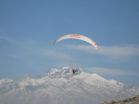(Press-News.org) Fifteen members of the Entomological Society of America (ESA) gave presentations at the "Second Annual National Bed Bug Summit: Advancing Towards Solutions to the Bed Bug Problem," held by the U.S. Environmental Protection Agency (EPA) in Washington, DC, February 2, 2011.
The meeting focused on what is being done to combat bed bugs, the importance of educating consumers, improvements in prevention and control techniques, controlling bed bugs in schools and public housing, and on the state of bed bug knowledge and futue research needs.
"Many health departments are overwhelmed by bed bug complaints," said Susan Jennings (EPA). "Training is greatly needed to educate people about this pest."
Dr. Jody L. Gangloff-Kaufmann (Cornell University) stressed the importance of having bilingual team members on bed bug task forces in urban areas.
"We're seeing more reservoirs of bedbugs appearing more often and intensely in poor communities, where people do not have resources to care for themselves," she said. "The key to bed bug control is the involvement and awareness of members of the community."
Dr. Dini Miller (Virginia Tech University) spoke about some methods of bed bug control using integrated pest management (IPM), such as using dessicant dust, mattress encasements, removing clutter, using a vacuum cleaner, chemical treatments when applied correctly, and heat.
"The clothes dryer is the number-one line of defense. Clutter removal also helps by revoving bed bug hiding places," she said, noting however that some of these methods can be expenisve. "IPM using prevention and non-chemical methods take time, as do heat treatments, and time is money, especially when repeated treatments are necessary," she said.
Dr. Harold Harlan (Armed Forces Pest Management Board), who has maintained a bed bug colony for nearly four decades, gave some reasons whey bed bug control is so difficult.
"Control efforts most often fail because it is nearly impossible to find every bed bug in a room, insects are often identified as bed bugs incorrectly, treatments are often ineffective because the bugs are inaccessible, and bed bugs have developed resistance to certain insecticides," he said.
Dr. Coby Schal (North Carolina State University) spoke about the need for more bed bug research. To illustrate, he noted that "although bed bug research has been increasing, we have about 50 times as much research on mosquitoes than on bed bugs."
Suggestions were also made to launch a new website such as bedbug.gov, to create an online clearinghouse for educational materials, to explore the use of new media, and to find new ways to reach out to multicultural communities.
The ESA entomologists, representing universities, state and federal agencies, and private pest-control companies, gave the following presentations:
"Federal Agencies: Areas of Focus and Activities," by Susan Jennings, Public Health Coordinator, EPA Office of Pesticide Programs
"Getting the public to listen to your message: Lessons learned from a mosquito education program," by Kristen Bartlett-Healy, Post-Doctoral Associate Center for Vector Biology, Rutgers University
"Reaching Key Populations in Bed Bug Control," by Jody Gangloff-Kaufmann, IPM Specialist/Urban Entomologist, New York State IPM Program, Cornell University
"Bed Bug Control: Maximizing the Advantages of Your Treatment Strategies," by Dini Miller, Associate Professor/Urban Pest Management Specialist, Department of Entomology, Virginia Polytechnic Institute
"IPM and Prevention in Bed Bug Control," Allison Taisey, Program Coordinator, Northeastern IPM Center, Cornell University
"Using Temperature Extremes for Best Effect," Stephen Kells, Assistant Professor and Extension Entomologist, Department of Entomology, University of Minnesota
"Coordinating and Collaborating on Research," Stephen Kells, Assistant Professor and Extension Entomologist, Department of Entomology, University of Minnesota
"Non-Chemical Interventions and Do-it-yourself Approaches," Changlu Wang, Assistant Extension Specialist, Department of Entomology, Rutgers University
"Educating to Reduce Failures in Bed Bug Control," by Harold Harlan, Information Services Division, Armed Forces Pest Management Board
"Bed Bugs: IPM in Schools," by Thomas Green, Board President, IPM Institute of North America
"Educating to Increase Successes in Bed Bug Control," by Richard Cooper, Vice President, Bed Bug Central
"Bed Bug Research: A Variety of Approaches," by Coby Schal, Blanton J. Whitmire Distinguished Professor, Department of Entomology, North Carolina State University
"Researching Bed Bugs: What's Known and What's Next," by Mark Feldlaufer, Research Entomologist, Agricultural Research Service, U.S. Department of Agriculture
In addition, Daniel A. Strickman, a National Program Leader at USDA-ARS, and Adriana Costero, a Program Officer at the National Institutes of Health, moderated two sessions.
###
Anyone who would like to submit further information or comments related to any of the topics discussed at the summit are invited to visit www.regulations.gov and enter docket number EPA-HQ-OPP-2009-0190.
Shortly after the close of the summit, EPA will update the docket with presentation materials from the first day's plenary session and the outcomes from the breakout groups. The docket will be open for public comment until February 25, 2011.
Founded in 1889, ESA is a non-profit organization committed to serving the scientific and professional needs of more than 6,000 entomologists and individuals in related disciplines. For more information visit http://www.entsoc.org.
END
PHILADELPHIA – A simple test performed at the sideline of sporting events can accurately detect concussions in athletes, according to study by researchers at the University of Pennsylvania School of Medicine. Current sideline tests can leave a wide amount a brain function untested following concussion. Penn researchers showed that this simple test was superior to current methods and accurately and reliably identified athletes with head trauma. The study appears online now in Neurology.
The one-minute test involves the athlete reading single digit numbers displayed on index-sized ...
Food scientists at the University of British Columbia have been able to pinpoint more of the complex chemistry behind coffee's much touted antioxidant benefits, tracing valuable compounds to the roasting process.
Lead author Yazheng Liu and co-author Prof. David Kitts found that the prevailing antioxidants present in dark roasted coffee brew extracts result from the green beans being browned under high temperatures.
Their findings will appear in a forthcoming issue of Food Research International and can be previewed at: http://dx.doi.org/10.1016/j.foodres.2010.12.037
Liu ...
TORONTO, ON – Anthropologists at the University of Toronto and the University of Cambridge have discovered the oldest cemetery in the Middle East at a site in northern Jordan. The cemetery includes graves containing human remains buried alongside those of a red fox, suggesting that the animal was possibly kept as a pet by humans long before dogs ever were.
The 16,500-year-old site at 'Uyun al-Hammam was discovered in 2000 by an expedition led by University of Toronto professor Edward (Ted) Banning and Lisa Maher, an assistant professor of anthropology at U of T and research ...
HOUSTON (Feb. 2, 2011) -- For women seeking pregnancy by assisted reproductive technologies, such as in-vitro fertilization (IVF), a new study shows that the health of the uterus is more relevant than egg quality for a newborn to achieve normal birth weight and full gestation. This study, published in Fertility and Sterility, an international journal for obstetricians, offers new information for women with infertility diagnoses considering options for conceiving.
The study was conducted by Dr. William Gibbons, director of The Family Fertility Program at Texas Children's ...
The same properties that make engineered nanoparticles attractive for numerous applications—small as a virus, biologically and environmentally stabile, and water-soluble—also cause concern about their long-term impacts on environmental health and safety (EHS). One particular characteristic, the tendency for nanoparticles to clump together in solution, is of great interest because the size of these clusters may be key to whether or not they are toxic to human cells. Researchers at the National Institute of Standards and Technology (NIST) have demonstrated for the first time ...
Pasadena, Calif.—The brain—awake and sleeping—is awash in electrical activity, and not just from the individual pings of single neurons communicating with each other. In fact, the brain is enveloped in countless overlapping electric fields, generated by the neural circuits of scores of communicating neurons. The fields were once thought to be an "epiphenomenon, a 'bug' of sorts, occurring during neural communication," says neuroscientist Costas Anastassiou, a postdoctoral scholar in biology at the California Institute of Technology (Caltech).
New work by Anastassiou ...
SALT LAKE CITY, Feb. 2, 2011 – During the past two months, researchers launched weather balloons, drove instrument-laden cars and flew a glider to study winter inversions that often choke Salt Lake City in smog and trap dirty air in other urban basins worldwide.
The field campaign – part of a three-year study by the University of Utah and other institutions – ends Monday, Feb. 7 as atmospheric scientists begin analyzing data they collected to learn how weather conditions contribute to inversions, which occur when warmer air aloft holds cold air ...
Academic Medical Centers (AMCs) must adjust and adapt to the new health care reform laws or risk marginalization in the new health care arena, according to a New England Journal of Medicine Perspective article published online February 2.
The authors of the article, Scott A. Berkowitz, M.D., M.B.A., a fellow in cardiology and geriatrics at the Johns Hopkins University School of Medicine, and Edward D. Miller, M.D., dean and CEO of Johns Hopkins Medicine, argue that AMCs can not only remain relevant in the face of sweeping change, but can lead the way by serving as examples ...
Neiker-Tecnalia (The Basque Institute for Agricultural Research and Development) has created an air-conditioned greenhouse using alternative energies that enable the reduction of energy costs, improvements in energy efficiency and an increase in crop yields. The novel system has a biomass boiler and thermodynamic solar panels, which reach an optimum temperature for the crop without using fuels derived from petroleum oil or gas.
Neiker-Tecnalia has installed a biomass boiler (using wood and other organic waste as fuel), together with thermodynamic panels, with the goal ...
Older individuals, who constitute a rapidly growing population in the United States, account for a disproportionate share of health care utilization and cost.
Yet more than half of clinical trials exclude people based on their age or age-related conditions, according to a new study by Robert Wood Johnson Foundation (RWJF) Clinical Scholars® at the University of Michigan.
"These findings are concerning because it means that doctors cannot be confident that clinical trial results apply to their older patients," says Donna Zulman, M.D., the study's lead author and a ...



